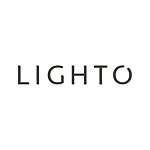*Large sizes can only be delivered at home.
*Scene simulation pictures, computer color differences, and ambient lighting may have some color differences from the actual posters received.
*The mounting method is time-consuming and labor-intensive. Orders need to wait 2-3 weeks, so please be patient.
Artist: David Hockney David Hockney
David Hockney is an important artist who rose to prominence in the UK in the 1960s. When he rose to prominence, he was still a student at the Royal College of Art in London. Together with his classmates and seniors such as Aaron Jones and R.B. Gita, he participated in the 1961 "Young Contemporaries" annual exhibition held at the Whitechapel Art Gallery, and jointly launched the new British pop aesthetics.
In 1964, Hockney moved from London to Los Angeles and began painting life in Southern California. His paintings are filled with endless hills, swimming pools and modernist buildings, many of which contain homoerotic undertones. Hockney also likes to create works based on landscape, including landscape paintings from the 1980s and collages made with Polaroid cameras and 35mm color negatives, as well as mural-sized landscape banners and stage sets. In recent years, he has used iPad to draw and continues to explore the relationship between visual perception, space and technology.
Tate Britain, Center Pompidou and the Metropolitan Museum of Art have organized a major retrospective of Hockney's career to celebrate his enduring career. At the age of 80, he still continues to create, and his works can be found in major art institutions around the world, including the British Museum in London, the Metropolitan Museum of Art in New York, and the Hayward Gallery Art Society in London.
Title of work: A CLOSER GRAND CANYON (1998)
Poster size: 46 x 137 cm
American Museum original poster
The difference between whether there is Acrylic or not:
》 Acrylic= one more layer of protection = one more layer of reflection
》No Acrylic= less layer of protection = you can directly see the work with better texture
I don’t know how to choose: (If there are children in the family, it is recommended to add Acrylic), (If there are adults in the family, you don’t need to use Acrylic)





*Scene simulation pictures, computer color differences, and ambient lighting may have some color differences from the actual posters received.
*The mounting method is time-consuming and labor-intensive. Orders need to wait 2-3 weeks, so please be patient.
Artist: David Hockney David Hockney
David Hockney is an important artist who rose to prominence in the UK in the 1960s. When he rose to prominence, he was still a student at the Royal College of Art in London. Together with his classmates and seniors such as Aaron Jones and R.B. Gita, he participated in the 1961 "Young Contemporaries" annual exhibition held at the Whitechapel Art Gallery, and jointly launched the new British pop aesthetics.
In 1964, Hockney moved from London to Los Angeles and began painting life in Southern California. His paintings are filled with endless hills, swimming pools and modernist buildings, many of which contain homoerotic undertones. Hockney also likes to create works based on landscape, including landscape paintings from the 1980s and collages made with Polaroid cameras and 35mm color negatives, as well as mural-sized landscape banners and stage sets. In recent years, he has used iPad to draw and continues to explore the relationship between visual perception, space and technology.
Tate Britain, Center Pompidou and the Metropolitan Museum of Art have organized a major retrospective of Hockney's career to celebrate his enduring career. At the age of 80, he still continues to create, and his works can be found in major art institutions around the world, including the British Museum in London, the Metropolitan Museum of Art in New York, and the Hayward Gallery Art Society in London.
Title of work: A CLOSER GRAND CANYON (1998)
Poster size: 46 x 137 cm
American Museum original poster
The difference between whether there is Acrylic or not:
》 Acrylic= one more layer of protection = one more layer of reflection
》No Acrylic= less layer of protection = you can directly see the work with better texture
I don’t know how to choose: (If there are children in the family, it is recommended to add Acrylic), (If there are adults in the family, you don’t need to use Acrylic)







